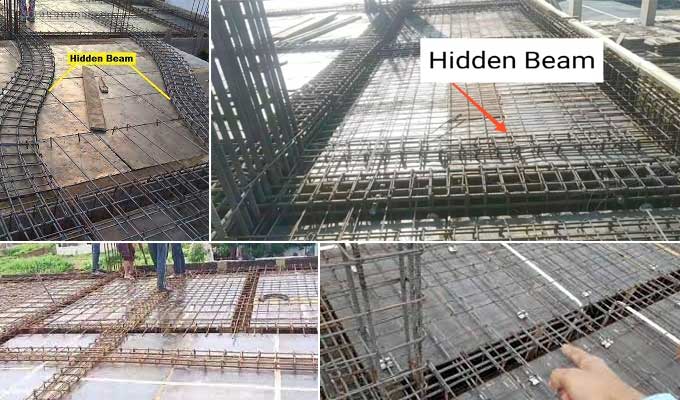
The Design of Hidden Beam & Its Pros & Cons in Construction Industry
A hidden beam is one whose depth is the same as the slab's thickness. This beam is also known as a concealed beam or constructed reinforced concrete.
An originator of the hidden beam makes use of the free headroom at beam sync to create the virtual beam. Therefore, the brick wall load will deal with the floor height and will not be compromised.
Purpose of Hidden Beam
Architectural beams are hidden only for aesthetic purposes inside a building. You are taking the side panel of a slab and cutting it into considerable pieces.
As a result, it helps disperse the weight carried by masonry walls and brickwork imposed on the slab. In this way, the slab can be used for a longer span.
Designing a Hidden Beam
- A beam designed using this system is similar to a conventional beam, except that it has a limited depth and shouldn't exceed the thickness of a slab.
- Thus, the depth of the reinforcement in the beam could be increased.
- It surrounds the cutout.
- Provide a neat and level ceiling surface in order to improve architectural aesthetic appearance.
- Floors should be raised as high as possible.
- The electrical ductwork had to be cleared.
- There is less floor clearance when it is installed.
- A slab can be overlaid with brickwork if necessary.
Pros of Hidden Beam
- There is a reduction in floor clearance.
- Labor and materials are saved by using this beam.
- Providing effective interior space partitioning and an acceptable aesthetic appearance.
- In commercial buildings, it is more relevant.
- With hidden beam floor height, electromechanical ductwork can be installed economically and also in a way that looks pleasing to the eye.
Cons of Hidden Beam
- Due to the height reinforcement ratio required to compensate for the depth restriction at column connections, the hidden beam is considerably low in ductility.
- It creates a span problem because the structural support spans are at an angle to each other.
- It should not be used on roofs with thinner than 200mm.
- You need not only to analyze a beam but also the whole slab if you want a concave beam.
- A column strip is weakening the structure.
- An earthquake may result in sandwiches.
- Almost 2% of RCC is devoted to hidden insurance.
- It cannot bear lateral loads.
- A hidden beam's vertical displacement is 10% higher than a normal beam, making it comparatively weak.
Uses of Hidden Beam
The hidden beam generally inserts between living rooms and dining rooms at right angles. It places where slab thickness is considerable.
An attractive smooth-level ceiling is created with this method. A concealed beam floor can provide a high floor height utilized for electromechanical ductwork, which is economical and attractive. Commercial buildings are more likely to use it.
Conclusion
The Hidden beam is a reinforced concrete beam built inside the depth of a concrete slab, sometimes referred to as the Hidden Beam. It can see that the Hidden Beam has the same depth as the slab.
Today's reinforced concrete structures feature concealed beams that are becoming increasingly popular. Last but not least, there were hidden beams because of rigid and strict architectural considerations. Therefore, brick walls and other loads handle in a way that does not compromise floor height.
Hidden beams are not beams but rather a way to distribute the concentrated weight of the walls over a large area of the slab. It is similar to conventional beams except that hidden beams are not allowed to be too thick nor too deep.
This restriction might then be overcome by increasing the reinforcement and width of the beam to some degree.


